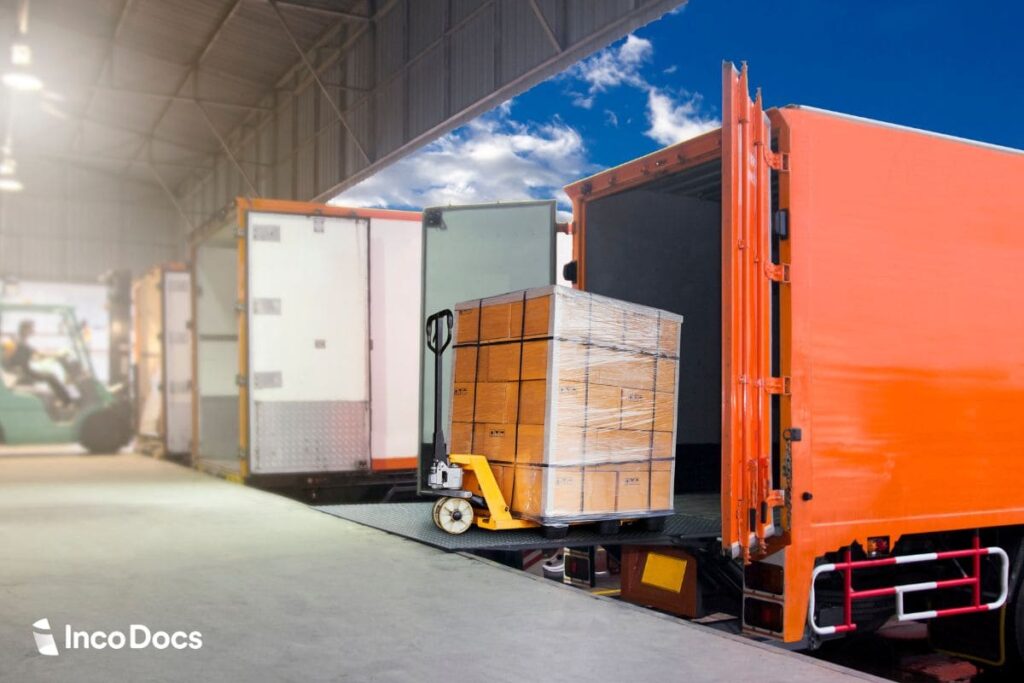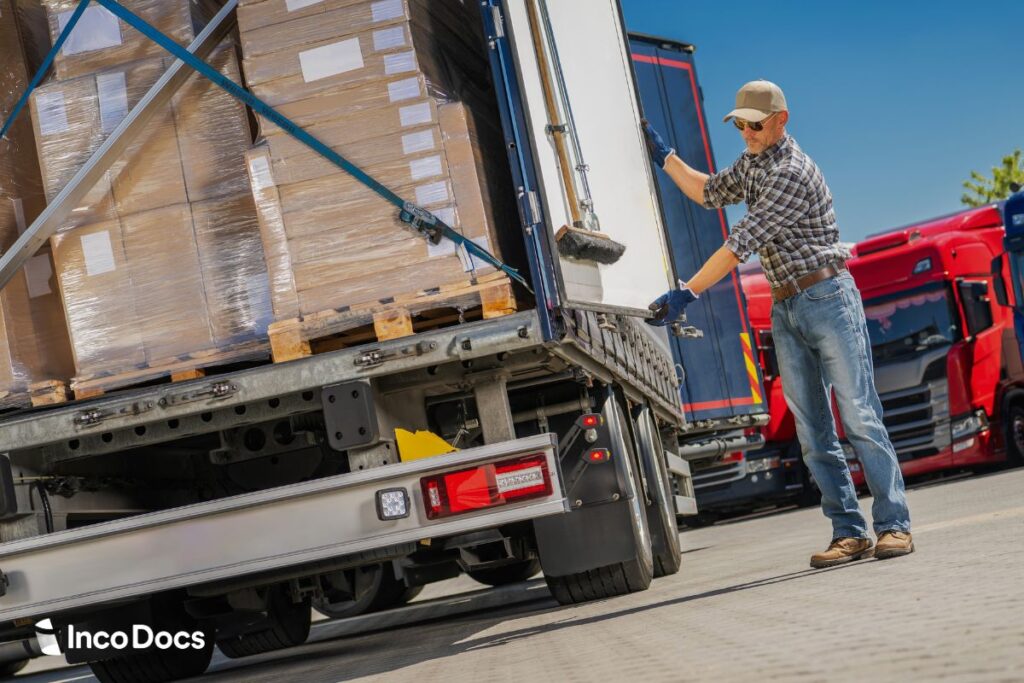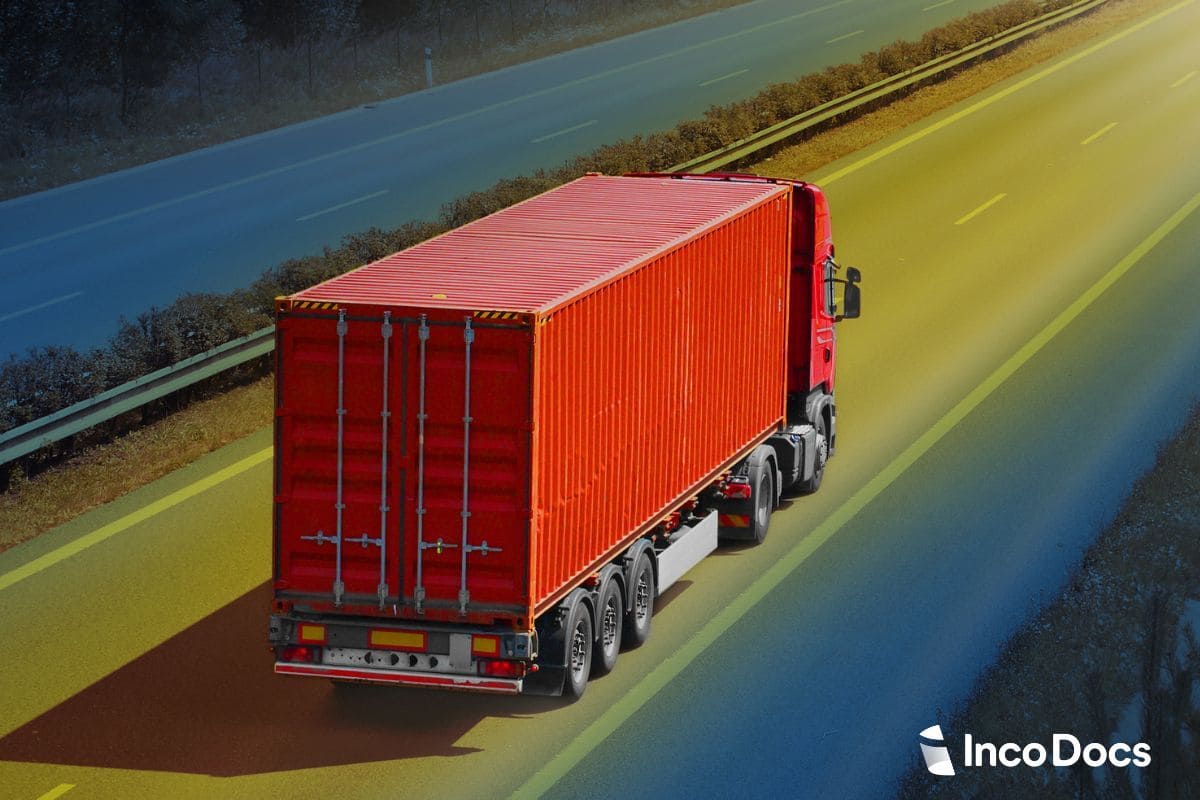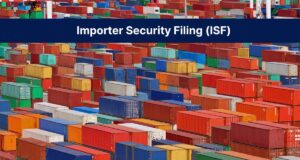Moving large quantities of goods across long distances can pose significant challenges for businesses. To transport large shipments efficiently and affordably, companies must choose the best transportation method. Full Truckload shipping is a standout choice due to its benefits. This guide explores FTL shipping, detailing its advantages and when it is the best option for your needs. Whether you’re experienced in logistics or a business owner aiming to improve your supply chain, this article provides key insights. These can help you understand FTL better and make choices that boost your profitability and efficiency.
What is Full Truckload (FTL)?
FTL stands for Full Truckload. Full truckload shipment, is a way to send goods where one entire truck or container is filled with items from just one customer. The truck travels straight from where it picks up the items to where it drops them off, without stopping along the way. This means that the customer pays to use the entire truck, even if they don’t fill it completely.
How does Full Truckload (FTL) Work?
Managing a truckload shipment with FTL ensures that your goods are transported efficiently and safely across long distances. Here’s how the process typically unfolds:
- Booking the Shipment: The first step involves securing a truck. You must find a trucking carrier with a vehicle available and provide the pickup and delivery locations.
- Loading the Truck: At the origin, your goods are loaded onto the truck. The entire space is reserved for your shipment alone, ensuring no other goods are mixed with yours.
- Transit to Destination: Once the truck is loaded, it travels directly to the delivery address. There are no stops to pick up other shipments and no transfers of your goods to other trucks.
- Monitoring the Shipment: You can track your shipment throughout its journey. Trucking companies typically offer tracking systems that allow you to monitor the truck’s location and progress.
- Unloading at Destination: Upon arrival, the truck is unloaded, and all goods are delivered at once.
This method minimizes handling and speeds up delivery, ensuring your goods arrive quickly and safely without the risk of damage.
What are the advantages of Full Truckload (FTL) Shipping?
FTL shipping has many benefits that make it a popular choice for shippers. Using FTL gives shippers precise control over their logistics, ensuring both safety and timely delivery. Here are some key advantages:
- Speed: FTL is faster than other modes of transportation. The truck travels directly from the pickup to the delivery point without stops, making it ideal for time-sensitive shipments.
- Reduced Handling: The goods stay on the same truck from start to finish. This minimizes handling and greatly reduces the risk of damage or loss.
- Dedicated Space: When you choose FTL, you get the entire truck for your shipment. This allows for efficient packing and full use of truck space, tailored to your specific needs.
- Enhanced Security: The cargo remains sealed within the truck throughout the journey. This reduces the risk of theft or tampering significantly.
- Greater Flexibility: FTL shipments do not make stops for other deliveries. This allows businesses to schedule pickups and deliveries that align perfectly with their timelines.
These advantages make FTL shipping a superior option for businesses that need fast, secure and efficient transport of large quantities of goods.
What affects the costs of Full Truckload (FTL)?
Consider a furniture retailer shipping a full truckload of sofas from their warehouse to a store location 1000 kilometres away. The weight, dimensions, and density of the sofa shipment, combined with the transportation distance and current fuel prices, will significantly influence the FTL cost quoted by carriers. Requesting additional services like interior delivery may further increase the total shipping expense.
Key factors influencing the costs associated with full truckload (FTL) shipping:
- Shipment Weight and Dimensions: Heavier and larger shipments generally incur higher FTL costs. Maximizing the truck’s weight and space capacity can optimize costs.
- Distance Traveled: Longer transportation routes over greater distances typically result in higher FTL rates compared to shorter hauls.
- Fuel Prices: As fuel is a significant expense for trucking companies, fluctuations in fuel costs directly impact FTL shipping rates.
- Market Demand: High demand for FTL services in certain regions or during peak seasons can drive up pricing due to limited truck availability.
- Additional Services: Extra services like specialized equipment (e.g., refrigerated trucks), loading/unloading assistance, or expedited delivery may increase FTL costs.
How many pallets can fit into a Full Truckload (FTL) shipment?

The number of pallets that can fit into a Full Truckload (FTL) shipment varies globally, primarily due to differences in standard trailer sizes and pallet dimensions used in different countries. In general, FTL shipments can accommodate between 24 to 34 standard pallets, but this range can change based on the specific carrier and the trailer size used.
Internationally, the most common trailer lengths for FTL shipments are about 13.6 meters (approximately 45 feet) in Europe, and similar or slightly shorter lengths in other regions. These trailers are usually around 2.5 meters (about 8 feet) wide. If using the standard European pallet size of 120 cm by 80 cm (approximately 47.2 inches by 31.5 inches), the capacity might typically be around 33 pallets for a full truckload.
It’s crucial to consider that if your shipment involves non-standard pallet sizes or irregularly shaped items, the number of units that can be loaded into the trailer may vary. Additionally, regulations and common practices in different countries can also affect the maximum load capacity of a truck.
What is the Full Truckload (FTL) weight limit?
The Full Truckload (FTL) weight limit can vary significantly around the world due to different national regulations and road infrastructure capacities. In the United States, most tractor-trailers used for FTL shipments typically have a maximum gross weight limit of around 80,000 pounds (approximately 36,287 kg). This limit includes the combined weight of the truck, trailer, fuel, and cargo.
In the European Union, the standard maximum weight limit for a truck and its cargo is generally lower, at about 40 tonnes (approximately 88,185 pounds or 40,000 kg). However, this can vary by country and the type of roads being used.
In other regions such as Asia and Latin America, weight limits may also differ. For example, in countries like India, the typical limit can be around 37 tonnes (about 81,571 pounds or 37,000 kg) depending on the axle configuration of the truck.
When planning an FTL shipment, it’s crucial to understand the specific weight regulations in each country your shipment will pass through. Optimizing freight density and distribution within the trailer is important for maximizing space utilization while adhering to local weight restrictions to avoid safety issues and potential fines.
Example of Full Truckload (FTL) car shipment
Imagine someone needs to ship their car across the country. FTL shipping is a great choice for this. The car is loaded onto a specialized truck designed for vehicle transport. As the only item on the truck, the car travels directly from pickup to destination. There are no stops or transfers. This direct route reduces the risk of damage and ensures quick delivery. FTL also offers better security and tracking, giving the car owner peace of mind.
What is the difference between Less Than Truckload (LTL) and Full Truckload (FTL)?

Less than Truckload (LTL) and Full Truckload (FTL) are two distinct shipping methods with several differences:
- Shipment Size: LTL shipments consist of smaller freight quantities that don’t fill an entire truck. In contrast, FTL shipments use the entire trailer or container space.
- Handling and Transfers: LTL shipments are combined with other customers’ goods, resulting in multiple handling and transfer points. FTL shipments stay in the same truck from start to finish, minimizing handling and potential damage.
- Transit Time: FTL shipments generally have faster transit times because they travel directly without intermediate stops. LTL shipments often take longer due to various pickups and deliveries.
- Cost Structure: LTL shipping costs are lower for smaller shipments since costs are shared among multiple customers. FTL shipping becomes cost-effective for larger volumes that fill an entire truck.
- Tracking and Visibility: FTL shipments offer better tracking and visibility due to a single point of origin and destination. LTL shipments have more complex tracking because of the multiple handling points.
- Freight Protection: FTL shipments offer enhanced security and a reduced risk of damage or loss, as the goods are untouched throughout the journey. LTL shipments, due to increased handling, may face higher risks of damage.
The choice between LTL and FTL depends on factors like shipment size, urgency, freight characteristics, and cost considerations. LTL is typically preferred for smaller, less urgent shipments, while FTL is better for larger, time-sensitive, or high-value goods needing dedicated transport.







